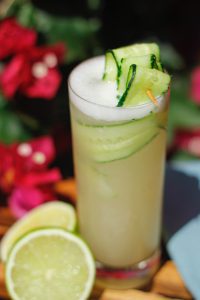WICKED WEATHER
Ava Stecker was in the right place at the right time when she snapped this cool photo of storm clouds rolling in over Port Jefferson Harbor on July 16.
Send your Photo of the Week to [email protected]
WICKED WEATHER
Ava Stecker was in the right place at the right time when she snapped this cool photo of storm clouds rolling in over Port Jefferson Harbor on July 16.
Send your Photo of the Week to [email protected]
By Daniel Dunaief

I was born in March, so, of course, I wished I were born in the summer.
My brothers were both born in the heat of the summer, which means they could go to a warm beach on their birthdays, sail across some waterway around Long Island, and celebrate the passage of another year without a midterm on their big day or, even worse, the day after their birthday.
But, the real reason I wished my birthday came during the summer was so that I could attend a Yankees game.
When my birthday rolled around, pitchers and catchers were often reporting to spring training, getting ready for the marathon of each baseball season.
When my son was born in July, sandwiched between a host of other family birthdays on both sides of the family, I figured he would have the chance to pursue the kind of unfulfilled baseball fantasy that I could only imagine as I was memorizing facts, figures and formulas for another set of tests before, during and immediately after my annual rite of passage.
Recently, we celebrated his birthday by going to one of the last few Yankees games before the All-Star break.
We had the privilege of attending a weekend game, when neither of us felt the need to work or meet a deadline.
My son is taking a summer course for which he was supposed to have a virtual test the day before we went to a game. The computer system crashed that day, and the professor suggested everyone take it the next day.
The system, however, continued not to work, perhaps obeying a secret wish my son made over his customized birthday cake, giving him the opportunity to enjoy the entire day with little to no responsibility other than to reply to all the well wishers and to compliment them on their melodic singing.
The game itself became a blowout early, as the Yankees scored run after run, and the Red Sox seemed to retreat to the safety of the dugout soon after coming up to bat.
Both of us ate more than we normally do in a day, celebrating the outing and reveling in the moment, high-fiving each other and the reveling strangers in Yankees jerseys in front of us.
While the packed stadium started to clear out when the game seemed out of reach for the visitors, we remained in our seats until the last pitch, soaking up the sun, predicting the outcomes of each pitcher-hitter match up and observing the small games-within-a-game that comes from watching the defense change its positioning for each hitter.
It still confounds me that a team could leave the third base line completely open, shift all the infielders towards right field, and still, the hitter won’t push the ball in a place where he could get a single or double. After all, if they heeded the advice of Hall of Famer Willie Keeler who suggested they “hit it where they ain’t,” these batters could get a hit, raise their batting average and contribute to a rally just by pushing the ball to a huge expanse of open and unprotected grass in fair territory.
Amid the many relaxing and enjoyable moments of connection with my son, he shared that he kind of wished he had born in the winter. After all, he said, he loves hockey and always imagined going to an NHL game on his birthday.
I suppose the grass is always greener, even on your birthday.
To be fair, though, he did add that wasn’t a genuine wish, as he was thrilled to attend baseball games on his actual birthday, and he was pleased that, in every other year, he didn’t have to worry about exams.
By Leah S. Dunaief

Incredibly, one man has altered the world.
On Feb. 24, 2022, Russian President Vladimir Putin directed his troops into neighboring Ukraine, and the killing began. Ukrainians, Russian soldiers, mercenaries, sympathetic foreign fighters, civilians — all shot each other. Eastern Ukrainians were deported into Russia by the thousands, cities throughout Ukraine were destroyed, families were ripped apart, millions of Ukrainians fled to other countries, schools stopped, medical services halted, commerce and cultural activities were squelched, random bombings put lives in a lottery. Those are just some of the horrific consequences of Putin’s order against one country.
But the repercussions of that one act are being felt around the globe. Countries that depended on wheat and other agricultural supplies grown and shipped from Ukraine and Russia, are now frantically seeking alternate sources, if they can afford them. Oil and gas, primarily piped from Russia and Ukraine, have been cut off. Exports of hundreds of other products from these two countries have stopped. Oil and gas prices have skyrocketed, leading the way to global inflation. Nations have realigned geopolitically and militarily or strengthened their defense pacts by sending troops and weapons to allies. And other campaigns, to control climate change and suppress the coronavirus, have diminished as national budgets are modified.
What does Putin want?
There has been much speculation about his goals and his fears. They may have crystalized during these ensuing months, or Kremlin watchers may have caught on. One such scholar, who writes about Russia’s politics, foreign policy and, for a score of years, has studied Putin’s behavior, has put forth a cogent scenario in this past Tuesday’s The New York Times. Tatiana Stanovaya believes that Putin has a grand scheme whose goals are threefold.
The first is the most pragmatic: the securing of a land bridge through the Donbas region of the southeast to Crimea. Russian troops seem to have already captured Luhansk, which is part of the Donbas. Apparently, Putin believes the West will accept that Russian troops cannot be dislodged from there and will not cross any red lines to directly engage in such a military effort, eventually abandoning the idea and the territory to Russia.
The second goal is to force Kyiv and the Zelensky government to capitulate from exhaustion and demoralization after one or two years. Russia would then launch a “Russification” of the country, erasing Ukrainian culture and nationhood and imposing Russian language, culture and education. Thus Russia would have expanded its territory and stopped NATO from reaching Russia’s current borders.
The third goal is the most ambitious: Putin wants to build a new world order. “We are used to thinking that Mr. Putin views the West as a hostile force that aims to destroy Russia,” according to writer Stanovaya. “But I believe that for Mr. Putin there are two Wests: a bad one and a good one.”
The “bad” one is the one currently in power and led by elites who are “narrow-minded slaves of their electoral cycles who overlook genuine national interests and are incapable of strategic thinking.” And the “good West”? He believes that “these are ordinary Europeans and Americans who want to have normal relations with Russia and businesses who are eager to profit from close cooperation with their Russian counterparts.”
Today, Putin is convinced, the bad West is declining while the good West is challenging the status quo with nationally oriented leaders like Viktor Orban in Hungary, Marine Le Pen in France, and Donald Trump, “ready to break with the old order and fashion a new one.”
The war against Ukraine, with its undesirable consequences like high inflation and soaring energy prices, “will encourage the people to rise up and overthrow the traditional political establishment.” This fundamental shift will then bring about a more-friendly West that will meet the security demands of Russia.
If that has a familiar echo, it is not so different from the Communist expectation that the proletariat will rise up and embrace Marx and Lenin. We know how that turned out.
The following incidents have been reported by Suffolk County Police:
Centereach
■ A resident on Debron Court in Centereach reported that an unknown man was captured on camera stealing his Ancheer 350W electric bike from his backyard on July 7.
■ F.W. Webb Plumbing Supply on Middle Country Road in Centereach reported that two unknown men entered the property and stole a copper pipe worth $3,000 on July 8.
Commack
■ Guitar Center on Garet Place in Commack reported a grand larceny on July 7. A man allegedly stole a Gibson Les Paul custom guitar valued at $6,499.
■ A woman putting items in her car in the Walmart parking lot on Crooked Hill Road in Commack on July 6 forgot to take her pocketbook out of the shopping cart before driving away. When she returned, the pocketbook containing cash and credit cards was gone. Surveillance video captured a man walking up to the cart and taking it.
East Northport
■ A car was reported stolen from a resident’s driveway on Glenridge Lane on July 8. The keys had been left inside along with a wallet and cash. The vehicle, a 2017 Infiniti QX60, was valued at $40,000.
Huntington Station
■ A 2017 white Ford Escape was reported stolen from the driveway of a resident on Crombie Street in Huntington Station on July 4. The keys had been left inside the vehicle which was valued at $8,000.
■ Saks Fifth Avenue on Walt Whitman Road in Huntington Station reported a grand larceny on July 9. A man allegedly stole various designer belts valued at $1,500.
■ Best Buy on Walt Whitman Road in Huntington Station reported on July 7 that two men allegedly took a ATX Mid Tower computer case off the shelf and fled the store. The item was valued at $155.
■ Saks Fifth Avenue on Walt Whitman Road in Huntington Station called the police to report at grand larceny on July 6. Three men allegedly entered a dressing room with eight men’s Versace clothing items, concealed them under their own clothing, and exited the store. The merchandise was valued at $2,675.
Kings Park
■ A shoplifter was reported at Key Food on Indian Head Road in Kings Park on July 6. A woman allegedly stole assorted food items worth $80.
Lake Grove
■ Bed Bath & Beyond on Nesconset Highway in Lake Grove reported a shoplifter on July 6. A man allegedly stole multiple knife sets valued at $650.
Melville
■ Conoco gas station on Walt Whitman Road in Melville called the police on July 7 to report that a man in a white BMW pumped $53 worth of gas and drove away without paying.
Mount Sinai
■ A resident on Ross Street in Mount Sinai reported that two men entered his unlocked vehicle on July 7 and stole cash.
■ A person who parked their car at Ralph’s Fishing Station on Harbor Beach Road in Mount Sinai on July 6 reported that someone entered their vehicle and stole a large amount of cash.
Port Jefferson
■ Fetch Doggy Boutique & Bakery on East Main Street in Port Jefferson reported on July 7 that two women allegedly stole miscellaneous dog toys and clothing valued at $930.
Port Jefferson Station
■ Kunz Greenhouses on Hallock Avenue in Port Jefferson Station reported that a man allegedly attempted to steal assorted flowers valued at $50. Most of the merchandise was recovered.
St. James
■ Expedition Imports on Middle Country Road in St. James called the police on July 4. Someone stole four rims valued at $6,000 and four tires valued at $1,000 from a custom 2014 Mercedes B.
Selden
■ A shoplifter was reported at Pets Warehouse on Middle Country Road in Selden on July 7. A woman allegedly stole cat food and cat toys valued at $70.
■ Target on Middle Country Road in Selden reported a petit larceny on July 2. A man and a woman allegedly stole a Dyson vacuum valued at $430 and one Ninja air fryer valued at $170.
■ Home Depot on Middle Country Road in Selden reported that three shoplifters allegedly stole 100 copper elbows and concealed them in a garbage can before fleeing. That same day two shoplifters allegedly filled two garbage cans with copper wire valued at $1263.
Shoreham
■ Long Island Sound Sharks Football & Cheerleading on Defense Hill Road in Shoreham reported that someone broke two padlocks and a steel mount to a storage container on July 8 and stole assorted football equipment valued at $900. The damaged material was valued at $200.
Sound Beach
■ A resident on Dering Road in Sound Beach reported that someone entered her unlocked vehicle on July 7 and assorted personal items.
— Compiled by Heidi Sutton
Suffolk County Crime Stoppers offers a cash reward for information that leads to an arrest. Anyone with information about these incidents can contact Suffolk County Crime Stoppers to submit an anonymous tip by calling 1-800-220-TIPS.
By Barbara Beltrami
It may not be a popsicle or a slushy or an ice cold beer, but as veggies go, a cucumber(especially an English one) is, as the cliche goes, really cool. Put a slice or two in whatever your preferred hydration source is, be it a martini or spring water; use a few slices to soothe puffy eyes or a sunburn. Or make the cucumber the main ingredient of a salad, soup or refreshing drink. It marries well with citrus, yogurt, cream and herbs, especially dill, as you will see from the following recipes.
Cucumber-Dill Salad
YIELD: Makes 4 servings
INGREDIENTS:
1 large English cucumber
3 tablespoons apple cider vinegar
1 tablespoon sugar
Salt and freshly ground pepper to taste
Half a Vidalia onion, thinly sliced and broken into rings
1/4 cup fresh dill, chopped
2 tablespoons chopped fresh chives
DIRECTIONS:
Peel and slice cucumber into paper-thin discs. In a large bowl combine the vinegar, sugar, salt and pepper. Whisk vigorously, then add cucumber, onion, dill and chives and toss thoroughly to coat. Cover and refrigerate for a few hours or serve at room temperature with pumpernickel bread and unsalted butter.
Cold Cucumber Soup with Lobster
YIELD: Makes 8 servings
INGREDIENTS:
Two 16-ounce containers Greek yogurt
1 1/4 cups light cream
3 English cucumbers, unpeeled and chopped
3/4 cup chopped red onion
8 scallions, both white and green parts sliced
Salt and freshly ground pepper to taste
1/4 cup chopped fresh dill
2/3 cup freshly squeezed lemon juice
1 pound cooked lobster meat, cut into bite-size pieces
8 cucumber slices, for garnish
DIRECTIONS:
In a large bowl combine the yogurt, cream, cucumbers, onion, scallions, salt and pepper; transfer in batches to a food processor and process until it has the consistency of a coarse puree. Transfer to another bowl and when all batches have been processed, stir in the dill; cover and refrigerate until very cold, 2 to 3 hours. Just before serving stir in the lemon juice and sprinkle with lobster pieces. Garnish with cucumber slices before serving.
Cucumber Raita
YIELD: Makes about 4 cups
INGREDIENTS:
2 cups plain Greek yogurt
2 cups grated unpeeled English cucumber
1 garlic clove, minced
Leaves from 4 sprigs fresh mint, finely chopped
Salt and freshly ground black pepper to taste
2 tablespoons raisins
DIRECTIONS:
In a large bowl thoroughly whisk the yogurt until it’s creamy and smooth; add the cucumber, garlic, mint, salt and pepper and raisins; stir, cover and chill. Serve with curry or any spicy grilled meat or poultry.
Cucumber Margarita

YIELD: Makes 2 cocktails
INGREDIENTS:
1 wedge or slice of lime
Coarse salt
3 ounces tequila
1 teaspoon orange liqueur
3 ounces key lime juice
1/2 cup peeled and seeded chopped cucumber
2 tablespoons sugar
6 cilantro leaves, chopped
2 dashes Tabasco sauce
6 ice cubes
2 cucumber slices
DIRECTIONS:
Wipe the rims of two margarita glasses with the lime, then dip the rims in a shallow dish of coarse salt. In a blender combine the tequila, orange liqueur, lime juice, chopped cucumber, sugar, cilantro, Tabasco sauce and ice cubes; blend for one minute, then immediately pour into prepared glasses and garnish with cucumber slices. Serve with chips.
By David Dunaief, M.D.

For some reason, there’s a social stigma associated with hemorrhoids, although we all have them. They’re vascular structures that aid in stool control. When they become irritated and inflamed, we have symptoms — and often say we “have hemorrhoids,” when we really mean our hemorrhoids are causing us pain.
Many of us have suffered at one time or another from inflamed hemorrhoids. They affect men and women equally, though women have a higher propensity during pregnancy and childbirth. When they’re irritated, hemorrhoids may alternate between itchy and painful symptoms, making it hard to concentrate and uncomfortable to sit. This is because the veins in your rectum are swollen. They usually bleed, especially during a bowel movement, which can be scary. Fortunately, hemorrhoids are not a harbinger of more serious disease.
There are two types of hemorrhoids: external, occurring outside the anus; and internal, occurring within the rectum.
When they are outside
Fortunately, external hemorrhoids tend to be mild. Most of the time, they are treated with analgesic creams or suppositories that contain hydrocortisone, such as Preparation H, or with a sitz bath, all of which help relieve the pain. Because they can be self-treated, they generally do not require an appointment with a physician. The most effective way to reduce bleeding and pain is to increase fiber through diet and supplementation (1).
Sometimes, however, there is thrombosis (clotting) of external hemorrhoids. In these cases, they may become more painful and require medical treatment. If you have rectal bleeding and either have a high risk for colorectal cancer or are over the age of 50, you should see your physician to make sure it is not due to a malignancy or other cause, such as inflammatory bowel disease.
When they are inside
Internal hemorrhoids can be a bit more complicated. The primary symptom is bleeding with bowel movement, not pain, since they are usually above the point of sensation in the colon, called the dentate line. If there is pain and discomfort, it’s generally because the internal hemorrhoids have falled out of place, due to weakening of the muscles and ligaments in the colon. This prolapse allows them to fall below the dentate line.
The first step for treating internal hemorrhoids is the same as for external hemorrhoids: add fiber through diet and supplementation. Study after study shows significant benefit. For instance, in a meta-analysis by the Cochrane Systems Data Review 2005, fiber reduced the occurrence of bleeding by 53 percent (2). In another study, after two weeks of fiber and another two-week follow-up, the daily incidence of bleeding decreased dramatically (3).
When issues are more severe
There are several minimally invasive options, including banding, sclerotherapy and coagulation. The most effective of these is banding, with an approximate 80 percent success rate (4). This is usually an office-based procedure where rubber bands are place at the neck of each hemorrhoid to cut off the blood flow. To avoid complications from constipation, patients should also take fiber supplementation.
Side-effects of the procedure are usually mild, and there is very low risk of infection. However, severe pain may occur if misapplication occurs with the band below the dentate line. If this procedure fails, hemorrhoidectomy (surgery) would be the next option.
Preventing hemorrhoid problems
First, sitting on the toilet for long periods of time puts significant pressure on the veins in the rectum, potentially increasing the risk of inflammation. Though you may want private time to read, the bathroom is not the library. As soon as you have finished moving your bowels, it is important to get off the toilet.
Get plenty of fluids. It helps to soften the stool and prevent constipation. Exercise also helps to prevent constipation. It is important not to hold in a bowel movement; go when the urge is there or else the stool can become hard, causing straining, constipation and more time on the toilet.
Increasing your fiber intake
Eating more fiber helps to create bulk for your bowel movements, avoiding constipation, diarrhea and undue straining. Thus, you should try to increase the amount of fiber in your diet before adding supplementation. Fruits, vegetables, whole grains, nuts, beans and legumes have significant amounts of fiber. Grains, beans and nuts have among the highest levels of fiber. For instance, one cup of black beans has 12g of fiber.
Americans, on average, consume 16g per day of fiber (5). The Institute of Medicine (IOM) recommends daily fiber intake for those <50 years old of 25 to 38 grams, depending on gender and age (6). I typically recommend at least 40 grams. My wife and I try to eat only foods that contain a significant amount of fiber, and we consume approximately 65 grams a day.
You may want to raise your fiber level gradually; if you do it too rapidly, be forewarned – side-effects are potentially gas and bloating for the first week or two.
References:
(1) Dis Colon Rectum. Jul-Aug 1982;25(5):454-6. (2) Cochrane.org. (3) Hepatogastroenterology 1996;43(12):1504-7. (4) Dis Colon Rectum 2004 Aug;47(8):1364-70. (5) usda.gov. (6) Am J Lifestyle Med. 2017 Jan-Feb; 11(1): 80–85.
Dr. David Dunaief is a speaker, author and local lifestyle medicine physician focusing on the integration of medicine, nutrition, fitness and stress management. For further information, visit www.medicalcompassmd.com.
By Daniel Dunaief
Screening for cancer can help people take steps to head off the development of a disease that could threaten the quantity and quality of their lives.
During the start of the pandemic, people around the world stopped screening for cervical, breast and colorectal cancer, according to a recent study led by Paolo Boffetta, Associate Director for Population Sciences at Stony Brook University’s Cancer Center.
The results of the study were recently published in the journal JAMA Oncology.
Compared to 2019, screenings for breast cancer dropped in the first few months after the start of the pandemic by 35.6 percent for breast cancer, 41.8 percent for colorectal cancer, and 54.1 percent for cervical cancer compared to the same period in 2019.

Boffetta chose these three cancers because they are the ones public health authorities recommend for the population at large. Screenings can improve patient outcomes.
“For some/ most cancer, the earlier the better for detection,” explained Stony Brook Cancer Center Director Yusuf Hannun.
Boffetta, who is also Adjunct Professor at the Icahn School of Medicine at Mount Sinai in New York City, suggested that the longer-term impact of a reduction in screenings in the early part of the pandemic won’t be clear to doctors or patients in the short term.
“It will take a little bit of time to have a full understanding of this,” said Boffetta. Depending on the specific type, cancers “that are detected by screenings would not otherwise appear for a few years.”
Boffetta suggested that the pandemic, apart from the illnesses and symptoms that threatened the health of people who were battling the virus itself, affected public health services. He believes several factors likely contributed to the decrease in screenings. Patients around the world were reluctant or restricted in their ability to leave their homes amid lockdowns.
Additionally, some cancer centers likely reduce the number of people they monitored to cut back on the density of patients in health care facilities, although Boffetta did not gather any data on the reduction in the number of screenings at health care centers.
The positive news amid this study, which surveyed cancer screening data in PubMed and other medical journals from 19 countries from January 2020 through December 2021, was that the number of patients screened returned to a more normal level within several months of the start of the pandemic.
“An important finding is that by the summer of 2020, the decrease in screenings for breast cancer and cervical cancer seem to have disappeared,” Boffetta said by phone from Italy, where he is a part-time professor at the University of Bologna. “For colorectal cancer [the decrease in screenings] lasted longer,” through the end of 2020.
Boffetta described the reduction in screenings and then a return to normal as a U-shaped curve, with an initial decline followed by a recovery. Doctors typically screen for colorectal cancers by using a colonoscopy. This technique requires several hours in the hospital. Patients may have been “more reluctant to go back to such a complex procedure, compared to the mammography or pap smear” which screen for breast and cervical cancers, respectively.
Boffetta is conducting a broad study of the cancer literature from early findings to clinical diagnosis to treatment. At this point, he has finished a paper on the frequency and types of clinical diagnoses amid the pandemic. He is collecting data for another study that will examine cancer treatment.
“We are interested in how the pandemic affected each of these stages,” he said.
Hannun suggested that Boffetta’s work expertise help address important health care questions related to the pandemic and other threats to public health, adding, “Epidemiology is essential for understanding the pandemic and many chronic diseases, especially cancer with exposure issues.
A lab update
Boffetta joined Stony Brook University in April of 2020, soon after the start of the pandemic.
Also a Professor in the Department of Family, Population and Preventive medicine at the Renaissance School of Medicine at Stony Brook University, Boffetta will return to the United States in a few weeks from Italy.
Boffetta has added Research Coordinator Germana Giupponi and postdoctoral fellow Malak Khalifeh to his research efforts at Stony Brook.

A native of Italy, Giupponi, who started working with Boffetta in July of 2020 and provides administrative support and coordination with Boffetta’s collaborators, earned her master’s degree from the University of Milan.
Khalifeh joined Boffetta’s lab in March, is originally from Lebanon and conducted her PhD research in France at the University of Bordeaux. She is studying the link between the exposure people have to various chemicals in drinking water and bladder cancer. The bladder is especially susceptible to toxins from the environment.
Boffetta, meanwhile, has started teaching some graduate level classes at Stony Brook on cancer epidemiology for master’s and PhD students. He will teach one class this fall.
He is also continuing his studies with survivors of the World Trade Center attacks.
He has been comparing the survival of these first responders to the overall population in New York, comparing how the risk of cancer changed over the course of the 21 years since the attacks.
Boffetta has been working with Ben Luft, Director of the Stony Brook WTC Wellness Program at the Renaissance School of Medicine. Luft has provided clinical and research support for WTC responders.
Boffetta continues to have academic affiliations with other academic institutions, including Harvard University and Vanderbilt University.
Boffetta and his wife Antonella Greco, who have been living in New York City, plan to move to the Stony Brook area. Their three daughters live in Brooklyn, Italy and Argentina. Now that pandemic restrictions have lifted, Boffetta has been able to return to the opera and museums and has done some skiing and hiking.
As for this study, Boffetta suggested that the findings about screenings were consistent with what he might have expected during the beginning of the pandemic.Delaying screenings could mean that some people discover cancers at a more advanced state by the time they diagnose them, he said.
By Lisa Scott
Independence Day traditions bring together families, friends and communities to celebrate being American. It’s not traditionally a time for introspection over barbecues, at ballparks and beaches and enjoying (or hiding from) pyrotechnics. But in 2022 July 4 occurred at a time of deep national concerns: economic, environmental, judicial, governmental and local.
Journalists, pundits, academics and attorneys have weighed in on end-of-term Supreme Court decisions which overturned Roe v. Wade and New York State’s restrictions on concealed carry of guns, brought religion further into publicly supported education and severely limited the ability of the EPA to address carbon emissions in a time of severe climate change.
The New York Times on July 3 wrote, “The United States appears to be drifting apart into separate nations, with diametrically opposed social, environmental and health policies… The tearing at the seams has been accelerated by the six vote conservative majority in the Supreme Court, which has embraced a muscular states-rights federalism.”
The Constitution has been evoked more and more in the past year; some demand a literal interpretation, while others wonder what happened to its amendments’ rights and freedoms. 235 years ago our nation’s founders wrote “We the People” to commence the preamble to the Constitution, yet the common ground of our civic beliefs has severely eroded.
Where you live determines what rights you have. We are no longer (if we ever were) equal Americans. But the League of Women Voters has and will continue to educate and advocate for voting rights which exemplify freedom — “the freedom to determine who we are, who we want to be and who we want to make the decisions about our country and our bodies” (Dr. Deborah Turner, President, LWVUS).
At our annual convention in late June the League of Women Voters of the United States reflected on new barriers to voting and continued attacks on our democracy, and the ways in which LWV is working to register new votes, but particularly to “Get Out the Vote.” From 2020-2022 (even through the challenges of the Covid-19 pandemic)) there were 12 million contacts with voters. The League’s efforts tackled systemic challenges to voting rights through advocacy, litigation and organizing. The goal was to build more trust in our elections, grow our electorate with equity, create fairness for voter access and ensure community districting truly reflects our population.
The League’s Vote411.org voter information website was accessed by 5.5 million voters to view their ballot in over 40,000 races. Over 89,000 candidates were listed. Voters could check their voter registration, request an absentee ballot and review nationwide voting rules.
LWV litigated on a variety of issues including voter access during Covid-19, the 2020 Census, redistricting, money in politics and excessive voter purges. LWV filed lawsuits in more than half the states to ensure adequate ballot notice and cure procedures, access to drop boxes and greater access to voting by mail. LWV also joined amicus briefs supporting common sense money in politics regulations and intervened in cases to prevent irresponsible voter purges.
Our New York State LWV has also been active on the state level, including amicus briefs and litigation especially on NYS redistricting and the complications resulting from the court requiring redrawn Congressional and NYS Senate districts, leading to two primary dates in 2022 (June 28 and August 23).
LWVUS also continued focusing on the protection and enforcement of voting rights in the 117th Congress which included the For the People Act, the Freedom to Vote Act and the John Lewis Voting Rights Act. Alongside national voting civil rights partners, LWVUS supported hundreds of state and local Leagues in leading and joining distributed actions around the country in support of federal voting rights legislations, resulting in hundreds of actions and thousands of voters engaged. In spite of this work, the US Senate failed to advance (combined) Freedom to Vote: John R. Lewis Act past debate.
In 2022 and beyond, Get Out The Vote efforts must be stronger, louder, and even more creative. We can register millions, but if only thousands vote, have we truly empowered voters? Our democracy is not based on age, race, gender, or zip code — it is for everyone, and that is why we must not only fight back but lead the charge. This is not a partisan issue — This is an American issue. “We the People” should together want to make our democracy stronger and create a more perfect union.
Lisa Scott is president of the League of Women Voters of Suffolk County, a nonprofit, nonpartisan organization that encourages the informed and active participation of citizens in government and influences public policy through education and advocacy. For more information, visit https://my.lwv.org/new-york/suffolk-county or call 631-862-6860.
Most professionals have some formal education, specialized knowledge or years of training in their field. Librarians are no different.
So why are librarians across the nation being challenged on their collection choices in public libraries?
A recent article in The New York Times, “With Rising Book Bans, Librarians Have Come Under Attack,” delved into the issues these public servants have faced as more Americans look to ban books, especially those addressing LGBTQ+ rights and racial inequality.
It’s a librarian’s job to choose books and other items that cover a wide variety of topics so that all community members can find materials they can relate to or help them learn and expand their horizons. Librarians have devoted years of study, usually obtaining a master’s degree in library sciences, to properly choose the books on the shelves.
Libraries have written procedures for librarians to follow when choosing collections. They weigh the opinions of critics and reviewers, evaluate the community’s needs and consider age appropriateness, among other criteria.
The books they choose and place on the shelves are sacred. Not all may be award worthy or to everyone’s liking. Still, the authors have taken their time to share their experiences, knowledge, imagination or all of these to let readers know they are not alone. Books transport us, taking us on an adventure, educating us in the process.
It’s for this reason that books are not to be banned or burned. They are meant to be respected. One doesn’t have to like a topic or how it’s written to accept its right to exist and Americans’ rights to read and write about what they desire.
Recently, The Smithtown Library Board of Trustees instructed all of the library’s branches to take down the Pride Month displays, which included books, in the children’s sections. After criticism from residents, New York Gov. Kathy Hochul (D) and the New York Library Association, the board reversed its decision two days later, and returned the displays to the sections.
After the reversal was voted on, board president Brianna Baker-Stines, who voted against removing the displays, said, “We need to trust the staff we hired.”
Some parents and guardians may be troubled by what they see in the young adult and children’s sections based on what they feel comfortable with, but they must remember that public libraries are not just for them — they are for everyone in their community and everyone has different needs and comfort levels.
Everyone must feel acknowledged.
Ultimately, it’s the job of a parent or guardian to monitor what their child or teenager is reading. When it comes to younger children roaming around the library, it’s up to those same adults to monitor them, and they have every right to steer their children away if they feel they may see or grab a book that the particular child may not be ready for.
Yes, sometimes an image of seeing someone different from them may prompt a little one to ask questions. When an adult welcomes a child into their world, whether they like it or not, answering questions comes with the territory. It’s their job.
As adults, we have an obligation to assimilate our youth into our increasingly diverse, intricate adult world. We do children no favors by shielding them from the realities of 21st-century life. And our public librarians serve a vital function in bringing attention to those realities.
It’s not up to librarians to choose books for you or your child specifically. That happens when you check out a book. It is their job to provide a variety of material to educate and entertain the community as a whole. Let them do the job that they are trained to do.
 Welcome to the seventh edition of Paw Prints, a monthly column for animal lovers dedicated to helping shelter pets find their furever home!
Welcome to the seventh edition of Paw Prints, a monthly column for animal lovers dedicated to helping shelter pets find their furever home!

Meet Quincy
A ten-year-old Pomeranian mix, this is Quincy, aka Fancy Pants!, and a proud member of Little Shelter’s Silver Paw Connection. This spry and sassy senior is vying to become the newest member of your family. Smart, curious, and a bit feisty, Poms have been nicknamed, “the little dog who thinks he can”, and our Quincy is supremely confident that he will win you over in no time flat! Full of personality, you’ll find his company both entertaining and inspiring. It has been said that: “Adopting a senior dog is like fast-forwarding to the best part.” The best is waiting for you at Little Shelter in Huntington….just ask for Quincy. Call 631-368-8770, ext. 21.

Meet Reilly and DJ
Currently at the Smithtown Animal Shelter, these 3-year-old brothers were left homeless when their mom passed away and are looking for another loving home to live out the rest of their lives together. DJ has a thick black coat and loves affection all the time from whomever will dish it out. He is a sweet boy and will cry for love and for his brother. Sporting an orange and white coat, Reilly takes a bit more time to warm up to new people, but is reported to be a lap cat when he does bond with a human. Call 631-360-7575.Rielly

Meet Margarita
This refreshing little lady is Margarita, a ten-year-old Poodle mix up for adoption at Little Shelter in Huntington. The perfect accompaniment for a short walk or lounging by the pool, she is brimming with interesting tales, always keeping up her end of the conversation. Alert, intelligent, and still active, she is living proof that age is merely a number, remaining young at heart and mind. Loyal and loving, with a streak of independence, she would be a great addition for most families. Live the lime life with this Margarita by your side…salt is optional! Call 631-368-8770, ext. 21

Meet Pesto
Waiting patiently for his furever home, Pesto is a young short-haired cat who has been overlooked for too long! He likes snuggles and playtime and spends most of his time on the enclosed deck at Little Shelter in Huntington watching the birds and chipmunks. Come meet him today! Call 631-368-8770, ext. 36.

Meet Logan
Just look at that sweet face! Logan is a young yellow lab mix rescued from a shelter in south Louisiana and now up for adoption at Kent Animal Shelter in Calverton, He weighs about 82lb and is about one and a half years old. Logan is looking forward to finding a loving forever home where he can be safe and live out a happy long life. Come meet this sweetheart today! Call 631-727-5731, ext. 1.

Join Little Shelter Animal Rescue & Adoption Center, 33 Warner Road, Huntington for Anna & Raven’s Adopt & Rescue event on Saturday, July 16 from 10 a.m. to 6 p.m. There will be numerous dogs, cats, puppies and kittens available for adoption along with live music, handmade jewelry and raffle baskets. Call 631-368-8770 ext. 21 for more information.
Check out the next Paw Prints in the issue of Aug. 11.
